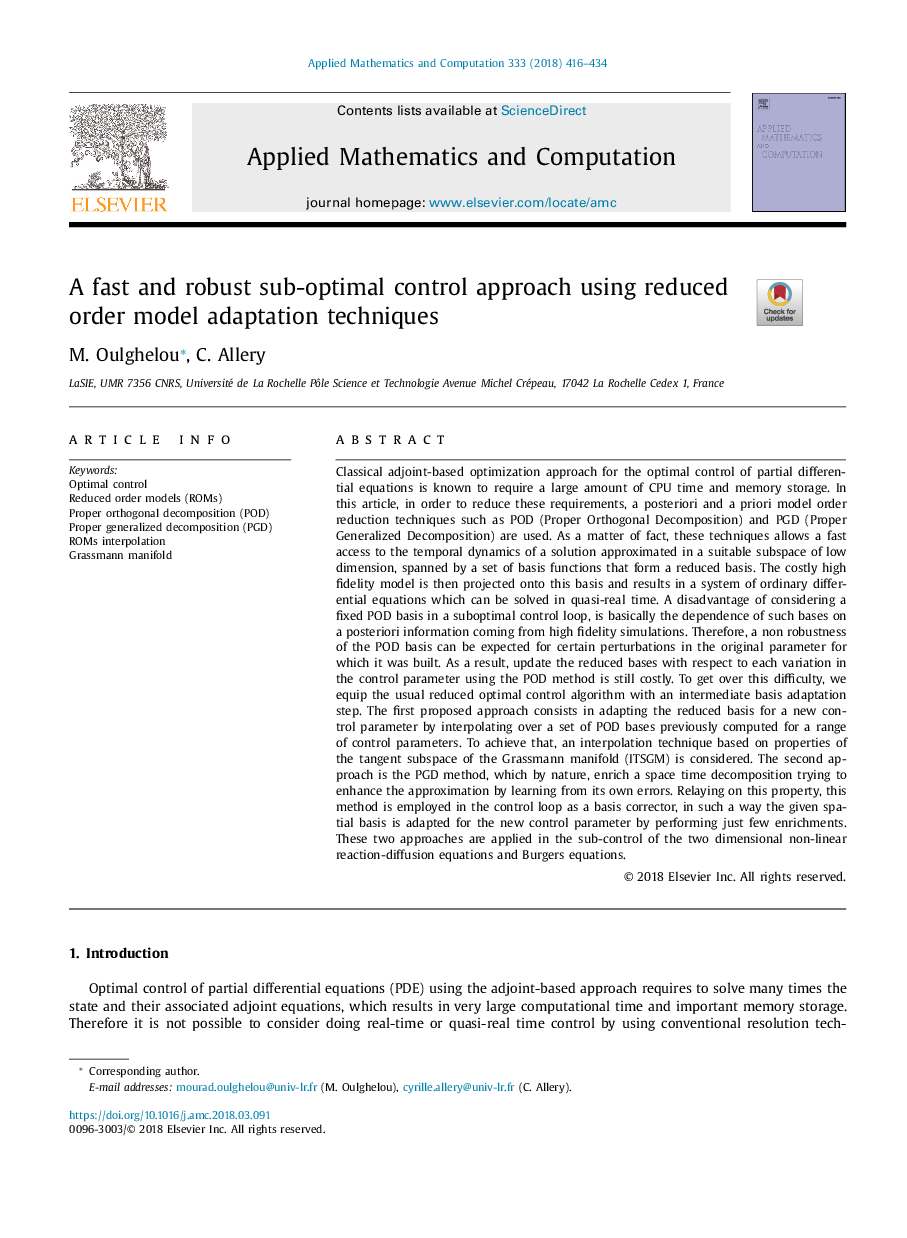| Article ID | Journal | Published Year | Pages | File Type |
|---|---|---|---|---|
| 8900905 | Applied Mathematics and Computation | 2018 | 19 Pages |
Abstract
Classical adjoint-based optimization approach for the optimal control of partial differential equations is known to require a large amount of CPU time and memory storage. In this article, in order to reduce these requirements, a posteriori and a priori model order reduction techniques such as POD (Proper Orthogonal Decomposition) and PGD (Proper Generalized Decomposition) are used. As a matter of fact, these techniques allows a fast access to the temporal dynamics of a solution approximated in a suitable subspace of low dimension, spanned by a set of basis functions that form a reduced basis. The costly high fidelity model is then projected onto this basis and results in a system of ordinary differential equations which can be solved in quasi-real time. A disadvantage of considering a fixed POD basis in a suboptimal control loop, is basically the dependence of such bases on a posteriori information coming from high fidelity simulations. Therefore, a non robustness of the POD basis can be expected for certain perturbations in the original parameter for which it was built. As a result, update the reduced bases with respect to each variation in the control parameter using the POD method is still costly. To get over this difficulty, we equip the usual reduced optimal control algorithm with an intermediate basis adaptation step. The first proposed approach consists in adapting the reduced basis for a new control parameter by interpolating over a set of POD bases previously computed for a range of control parameters. To achieve that, an interpolation technique based on properties of the tangent subspace of the Grassmann manifold (ITSGM) is considered. The second approach is the PGD method, which by nature, enrich a space time decomposition trying to enhance the approximation by learning from its own errors. Relaying on this property, this method is employed in the control loop as a basis corrector, in such a way the given spatial basis is adapted for the new control parameter by performing just few enrichments. These two approaches are applied in the sub-control of the two dimensional non-linear reaction-diffusion equations and Burgers equations.
Keywords
Related Topics
Physical Sciences and Engineering
Mathematics
Applied Mathematics
Authors
M. Oulghelou, C. Allery,
